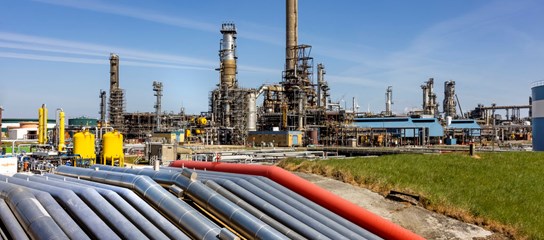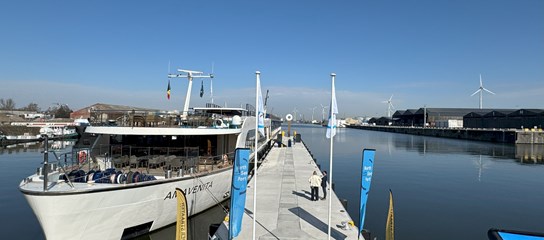Belgian ministers visit Vlissingen in North Sea Port to view construction site of world's first energy island
On Wednesday 23 April, Belgian Prime Minister Alexander De Croo, Minister of Energy Tinne Van der Straeten and State Secretary for Economic Recovery and Strategic Investments Thomas Dermine visited the caisson wharf for the Princess Elisabeth Island in Vlissingen, North Sea Port. The Belgian consortium of DEME and Jan De Nul (TM EDISON) is building the foundations of the Belgian energy island there on behalf of Belgian grid operator Elia Transmission. This artificial island will lie 45 kilometres off the Belgian coast. The Belgian energy island is a world first. It will become the first building block in a unified European high-voltage offshore grid and is fundamental to a successful energy transition in Belgium.
Alexander De Croo, Belgian Prime Minister: "The North Sea will be the power plant for our energy independence, and Princess Elisabeth Island will be a crucial element in that. Our country has long been a pioneer in offshore wind. By continuing to innovate, we are strengthening our position for the future as well. It gives Belgian companies another opportunity to do pioneering work, here and abroad, while guaranteeing renewable energy at a competitive price for our citizens and businesses. Once again, we are putting Belgium on the map."
23 caissons for one island
The caissons are large concrete building blocks that will form the outer walls of the future energy island. The first of 23 caissons is nearing completion and will be sunk in the North Sea in the summer.
The Vlissingen yard started work in September 2023. Some 300 people work there every day. With the construction of the first caisson, the scale of the project has become truly visible. Each one is 57 metres long, 30 metres wide and 30 metres high, and weighs 22,000 tonnes. It takes three months to build one caisson. When the caissons are ready, a semi-submersible vessel will transport them to another part of the port, where they will be lowered into the water and temporarily stored. This summer – weather permitting – they will then be moved to their final location in the North Sea. The caissons will become the outer walls of the energy island. The island itself will be created by pumping up some 2.3 million m³ of sand, extracted locally. By the end of 2026, the island will be ready and the installation of the electrical equipment can begin.
Daan Schalck: "The energy island is a great example of cooperation between Belgium and the Netherlands, with European support. Major Belgian companies have chosen Vlissingen, in the Dutch part of our port, as the location to construct the world’s first energy island of this kind. This choice was prompted by our strategy of backing the energy transition. As a result, a complete cluster for the offshore industry has been developing in Vlissingen for several years, for example offshore wind farm construction."
An innovative tour de force
Princess Elisabeth Island will be the world's first artificial energy island combining both direct current (HVDC) and alternating current (HVAC). The island's high-voltage infrastructure will bundle power lines from the wind farms in the Princess Elisabeth zone. The island will also become a hub for future interconnectors. It will not only facilitate power exchange between countries but will also be connected to new offshore wind farms in the northern part of the North Sea, which will eventually provide Belgium with large volumes of green electricity.
European support
The energy island has received funding from the European Covid recovery fund. A grant of around €100 million has been agreed with the Belgian government. Both Belgian and European support has also been promised for the creation of a series of nature measures. In consultation with experts in conservation and marine environment, a 'nature inclusive design' has been developed that will enhance biodiversity on and around the island.



